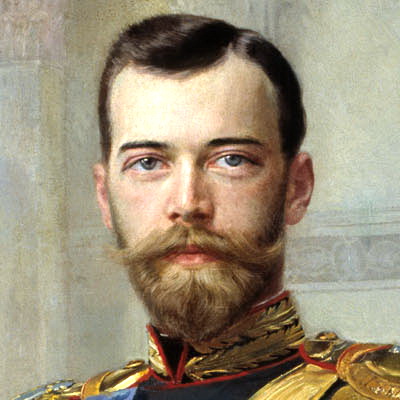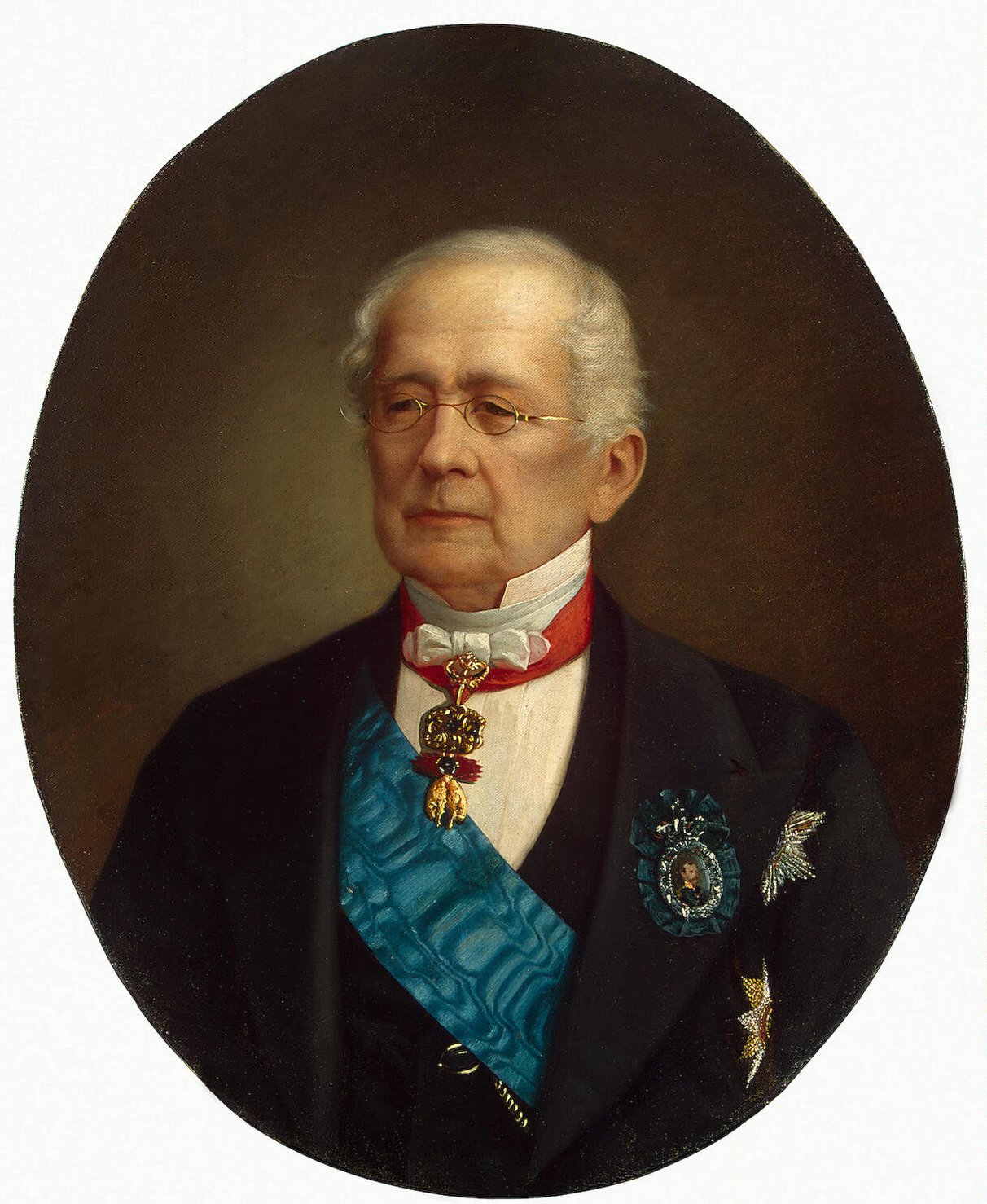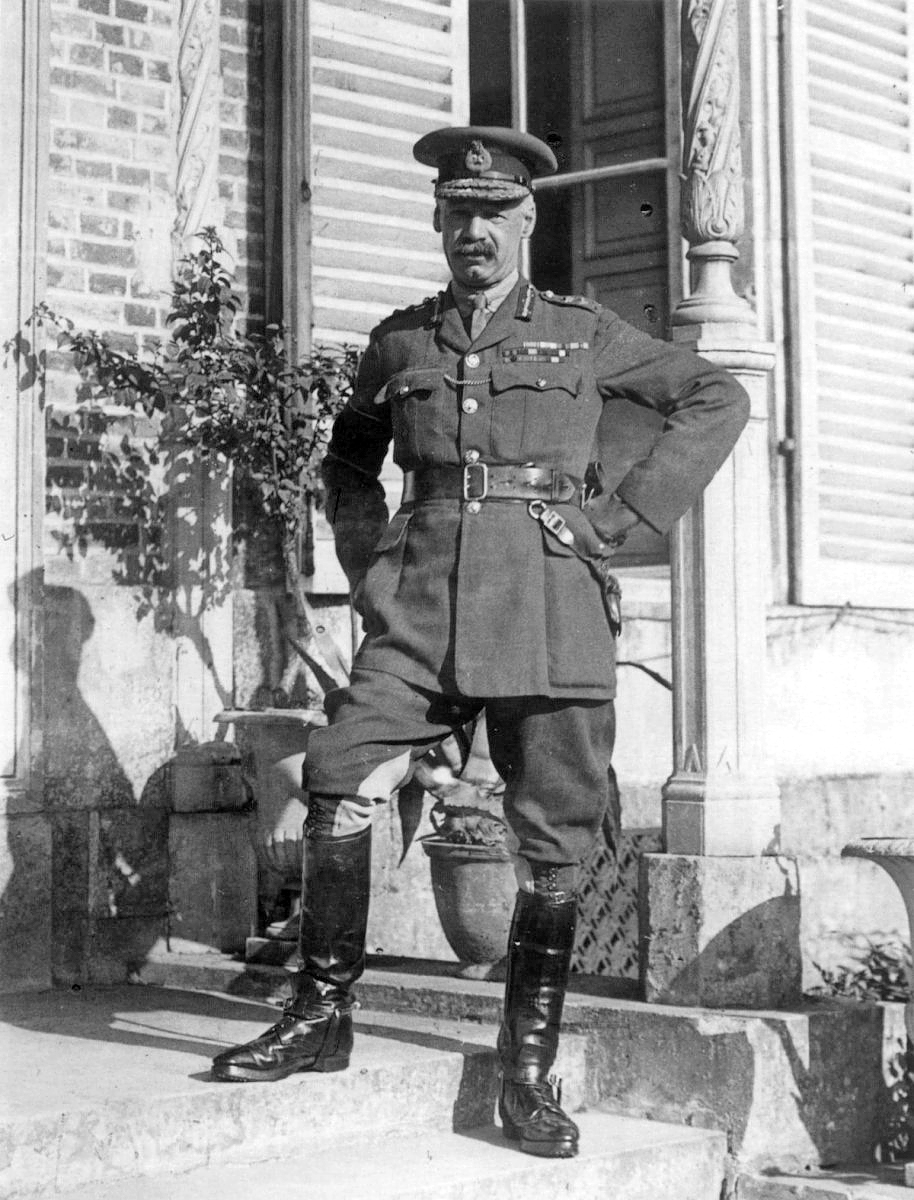|
QF 1-pounder Pom-pom
The QF 1 pounder, universally known as the pom-pom due to the sound of its discharge, was a 37 mm British autocannon, the first of its type in the world. It was used by several countries initially as an infantry gun and later as a light anti-aircraft gun. History Hiram Maxim originally designed the Pom-Pom in the late 1880s as an enlarged version of the Maxim machine gun. Its longer range necessitated exploding projectiles to judge range, which in turn dictated a shell weight of at least , as that was the lightest exploding shell allowed under the Saint Petersburg Declaration of 1868 and reaffirmed in the Hague Convention of 1899. Early versions were sold under the Maxim-Nordenfelt label, whereas versions in British service (i.e. from 1900) were labelled Vickers, Sons and Maxim (VSM) as Vickers had bought out Maxim-Nordenfelt in 1897 but they are the same gun. Service by nation Belgium The Belgian Army used the gun on a high-angle field carriage mounting. Finlan ... [...More Info...] [...Related Items...] OR: [Wikipedia] [Google] [Baidu] |
QF 2-pounder Naval Gun
The 2-pounder gun, officially the QF 2-pounder ( QF denoting "quick firing") and universally known as the pom-pom, was a British autocannon, used as an anti-aircraft gun by the Royal Navy.British military of the period traditionally denoted smaller guns in terms of the approximate weight of the standard projectile, rather than by its bore diameter, which in this case was 40 mm. References to 40-mm anti-aircraft guns invariably mean the Bofors gun, while references to 2-pounder anti-aircraft guns mean this gun. The name came from the sound that the original models make when firing. This QF 2-pounder was not the same gun as the Ordnance QF 2-pounder, used by the British Army as an anti-tank gun and a tank gun, although they both fired , projectiles. Predecessors - Boer War and the Great War QF 1 pounder The first gun to be called a pom-pom was the 37 mm Nordenfelt-Maxim or "QF 1-pounder" introduced during the Second Boer War, the smallest artillery piece of that war. It fir ... [...More Info...] [...Related Items...] OR: [Wikipedia] [Google] [Baidu] |
Finnish Civil War
The Finnish Civil War; . Other designations: Brethren War, Citizen War, Class War, Freedom War, Red Rebellion and Revolution, . According to 1,005 interviews done by the newspaper ''Aamulehti'', the most popular names were as follows: Civil War 29%, Citizen War 25%, Class War 13%, Freedom War 11%, Red Rebellion 5%, Revolution 1%, other name 2% and no answer 14%, was a civil war in Finland in 1918 fought for the leadership and control of the country between White Finland and the Finnish Socialist Workers' Republic (Red Finland) during the country's transition from a grand duchy of the Russian Empire to an independent state. The clashes took place in the context of the national, political, and social turmoil caused by World War I ( Eastern Front) in Europe. The war was fought between the "Reds", led by a section of the Social Democratic Party, and the "Whites", conducted by the conservative-based senate and the German Imperial Army. The paramilitary Red Guards, which were co ... [...More Info...] [...Related Items...] OR: [Wikipedia] [Google] [Baidu] |
Bundesarchiv Bild 183-R52907, Mannschaft Mit Gasmasken Am Fla-MG
, type = Archive , seal = , seal_size = , seal_caption = , seal_alt = , logo = Bundesarchiv-Logo.svg , logo_size = , logo_caption = , logo_alt = , image = Bundesarchiv Koblenz.jpg , image_caption = The Federal Archives in Koblenz , image_alt = , formed = , preceding1 = , preceding2 = , dissolved = , superseding1 = , superseding2 = , agency_type = , jurisdiction = , status = Active , headquarters = PotsdamerStraße156075Koblenz , coordinates = , motto = , employees = , budget = million () , chief1_name = Michael Hollmann , chief1_position = President of the Federal Archives , chief2_name = Dr. Andrea Hänger , chief2_position ... [...More Info...] [...Related Items...] OR: [Wikipedia] [Google] [Baidu] |
Hague Conventions (1899 And 1907)
The Hague Conventions of 1899 and 1907 are a series of international treaties and declarations negotiated at two international peace conferences at The Hague in the Netherlands. Along with the Geneva Conventions, the Hague Conventions were among the first formal statements of the laws of war and war crimes in the body of secular international law. A third conference was planned for 1914 and later rescheduled for 1915, but it did not take place because of the start of World War I. History The Hague Conventions of 1899 and 1907 were the first multilateral treaties that addressed the conduct of warfare and were largely based on the Lieber Code, which was signed and issued by US President Abraham Lincoln to the Union Forces of the United States on 24 April 1863, during the American Civil War. The Lieber Code was the first official comprehensive codified law that set out regulations for behavior in times of martial law; protection of civilians and civilian property and punishment of ... [...More Info...] [...Related Items...] OR: [Wikipedia] [Google] [Baidu] |
Saint Petersburg Declaration Of 1868
The Saint Petersburg Declaration of 1868 or in full Declaration Renouncing the Use, in Time of War, of Explosive Projectiles Under 400 Grammes Weight is an international treaty agreed in Saint Petersburg, Russian Empire, November 29 / December 11, 1868. It succeeded the First Geneva Convention of 1864. It was a predecessor of the well-known Hague Conventions of 1899 and 1907. It was signed by the members of the International Military Commission convened for this purpose in the presence of the Imperial Cabinet of Russia. History In 1863, the Russian Army had perfected a fulminating musketball that could explode when it hit a hard target and was designed to blow up powder magazines or ammunition wagons. At the same time several similar projectiles for the same purposes were developed in America, the best one known being the Gardiner's Explosive Bullet, and both sides used them in the US Civil War, inflicting horrible wounds when aimed at people, and that, in turn, caused a publ ... [...More Info...] [...Related Items...] OR: [Wikipedia] [Google] [Baidu] |
Maxim Gun
The Maxim gun is a recoil-operated machine gun invented in 1884 by Hiram Stevens Maxim. It was the first fully automatic machine gun in the world. The Maxim gun has been called "the weapon most associated with imperial conquest" by historian Martin Gilbert, and was heavily used by colonial powers during the "Scramble for Africa". Afterwards, Maxim guns also saw extensive usage by different armies during the Russo-Japanese War, the First and Second World Wars, as well as by insurgent groups in contemporary conflicts. The Maxim gun was greatly influential in the development of machine guns, and it has multiple variants and derivatives. Design The Maxim gun featured one of the earliest recoil-operated firing systems in history. Energy from recoil acting on the breech block is used to eject each spent cartridge and insert the next one. Maxim's earliest designs used a 360-degree rotating cam to reverse the movement of the block, but this was later simplified to a toggle lock. T ... [...More Info...] [...Related Items...] OR: [Wikipedia] [Google] [Baidu] |
Autocannon
An autocannon, automatic cannon or machine cannon is a fully automatic gun that is capable of rapid-firing large-caliber ( or more) armour-piercing, explosive or incendiary shells, as opposed to the smaller-caliber kinetic projectiles (bullets) fired by a machine gun. Autocannons have a longer effective range and greater terminal performance than machine guns, due to the use of larger/heavier munitions (most often in the range of , but bigger calibers also exist), but are usually smaller than tank guns, howitzers, field guns or other artillery. When used on its own, the word "autocannon" typically indicates a non-rotary weapon with a single barrel. When multiple rotating barrels are involved, such a weapon is referred to as a "rotary autocannon" or occasionally "rotary cannon", for short (particularly on aircraft). Autocannons are heavy weapons that are unsuitable for use by infantry. Due to the heavy weight and recoil Recoil (often called knockback, kickback o ... [...More Info...] [...Related Items...] OR: [Wikipedia] [Google] [Baidu] |
Henry Rawlinson, 1st Baron Rawlinson
General Henry Seymour Rawlinson, 1st Baron Rawlinson, (20 February 1864 – 28 March 1925), known as Sir Henry Rawlinson, 2nd Baronet between 1895 and 1919, was a senior British Army officer in the First World War who commanded the Fourth Army of the British Expeditionary Force at the battles of the Somme (1916) and Amiens (1918) as well as the breaking of the Hindenburg Line (1918). He commanded the Indian Army from 1920 to 1925. Early life Rawlinson was born at Trent Manor in Dorset on 20 February 1864. His father, Sir Henry Rawlinson, 1st Baronet, was an Army officer, and a renowned Middle East scholar who is generally recognised as the father of Assyriology. He received his early formal education at Eton College. Early military career After passing through commissioned officer training at the Royal Military College, Sandhurst, Rawlinson entered the British Army as a lieutenant in the King's Royal Rifle Corps in India on 6 February 1884. His father arranged for him to serv ... [...More Info...] [...Related Items...] OR: [Wikipedia] [Google] [Baidu] |
List Of British Ordnance Terms
This article explains terms used for the British Armed Forces' ordnance (i.e.: weapons) and also ammunition. The terms may have slightly different meanings in the military of other countries. BD Between decks: applies to a naval gun mounting in which part of the rotating mass is below the deck, and part of it is above the deck. This allows for a lower profile of turret, meaning that turrets need not be superfiring (i.e. they can be mounted on the same deck and not obstruct each other at high angles of elevation.) BL The term BL, in its general sense, stood for breech loading, and contrasted with muzzle loading. The shell was loaded via the breech (i.e. the gunner's end of the barrel, which opened) followed by the propellant charge, and the breech mechanism was closed to seal the chamber. Breech loading, in its formal British ordnance sense, served to identify the gun as the type of rifled breechloading gun for which the powder charge was loaded in a silk or cloth bag and the br ... [...More Info...] [...Related Items...] OR: [Wikipedia] [Google] [Baidu] |
Deutsche Waffen Und Munitionsfabriken
''Deutsche Waffen- und Munitionsfabriken Aktiengesellschaft'' (German Weapons and Munitions public limited company), known as DWM, was an arms company in Imperial Germany created in 1896 when ''Ludwig Loewe & Company'' united its weapons and ammunition production facilities within one company. In 1896 Loewe founded Deutsche Waffen- und Munitionsfabriken with a munitions plant in Karlsruhe (Baden), formerly Deutsche Metallpatronenfabrik Lorenz, and the weapons plant in Berlin. Shares that Loewe had in other gun- and ammunition plants were transferred to DWM. This included Waffenfabrik Mauser, Fabrique Nationale d'Armes de Guerre (FN) in Belgium and Waffen- und Munitionsfabrik A.G. in Budapest. The DWM was orchestrated by Isidor Loewe (1848–1910), as his brother Ludwig had died in 1886. Karl Maybach (who was part of the Maybach company) was employed by the Loewe company in 1901. Firearms DWM introduced the Pistol Parabellum ('Luger Pistol') in the early 1900s. It was worked on b ... [...More Info...] [...Related Items...] OR: [Wikipedia] [Google] [Baidu] |
Vickers
Vickers was a British engineering company that existed from 1828 until 1999. It was formed in Sheffield as a steel foundry by Edward Vickers and his father-in-law, and soon became famous for casting church bells. The company went public in 1867, acquired more businesses, and began branching out into military hardware and shipbuilding. In 1911, the company expanded into aircraft manufacturer, aircraft manufacture and opened a flying school. They expanded even further into electrical and railway manufacturing, and in 1928 acquired an interest in the Supermarine. Beginning in the 1960s, various parts of the company were nationalised, and in 1999 the rest of the company was acquired by Rolls-Royce Holdings, Rolls-Royce plc, who sold the defence arm to Alvis plc. The Vickers name lived on in Alvis Vickers, until the latter was acquired by BAE Systems in 2004 to form BAE Systems Platforms & Services, BAE Systems Land Systems. History Early history Vickers was formed in Sheffield ... [...More Info...] [...Related Items...] OR: [Wikipedia] [Google] [Baidu] |
Maxim Nordenfelt Guns And Ammunition Company
The Maxim-Nordenfelt Guns and Ammunition Company was the result of a takeover by Hiram Maxim of Thorsten Nordenfelt's Nordenfelt Guns and Ammunition Company in 1888. Rothschild issued £1.9 million of shares to finance the merger. Nathan Rothschild retained a substantial shareholding in the new Maxim-Nordenfelt combine and ‘exerted a direct influence over its management’. History The company produced a range of light artillery, machine guns and ammunition. It was the subject of one of history's most famous court cases in 1894, Nordenfelt v Maxim, Nordenfelt Guns and Ammunition Co, in which Nordenfelt successfully claimed that the takeover condition preventing him from competing with Maxim for 25 years "in any way" was an unreasonable restraint of trade, but failed to overturn the main condition preventing Nordenfelt from competing with Maxim in the guns and ammunition trade for 25 years. The company competed against the Armstrong subsidiary Elswick Ordnance Company's range ... [...More Info...] [...Related Items...] OR: [Wikipedia] [Google] [Baidu] |


.jpg)








